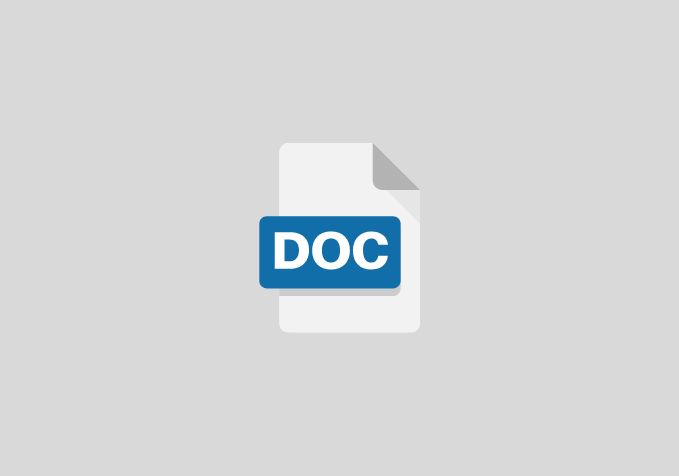A Proposal on Trust Repair
CHAPTER ONE
OBJECTIVE OF THE STUDY
The study will look at the following objectives
- To ascertain the relationship between trust and level of cooperation in organization
- To ascertain the relationship between trust and achievement of the organization
- To ascertain the trust repair between SMEs and Banks
- To ascertain what causes distrust between two organizations
CHAPTER TWO
REVIEW OF RELATED LITERATURE
Trust Repair
Those who wish to repair trust, however, typically confront a range of complications. First, since trustworthiness is ultimately in the eye of the beholder, there may be times when trust has been violated but the trustee does not realize that a violation occurred (e.g., when the trustee violated trust unknowingly, or the trustor was not visibly harmed by the transgression). In such cases, the trust violation would not necessarily be followed by a trust repair attempt; the latter may require that the trustee be informed of this need by the trustor (or third party). Second, trust repair requires more than simply compensating for the negative expectations arising from a trust violation by improving others (e.g., responding to damaged beliefs about the trustee’s integrity by bolstering beliefs about the trustee’s competence) (Baumeister & Jones, 1978). Such an approach may sometimes encourage trustors to engage in trust-relevant behaviors, but it does so by augmenting non-violated expectations (i.e., trust building) rather than by addressing the salient negative expectations that have arisen from the violation (i.e., trust repair). Similarly, although parties may initiate a number of legalistic remedies (e.g., policies, procedures, contracts, monitoring) to promote trustworthy behavior (e.g., Nakayachi et al., 2005; Sitkin, 1995; Sitkin et al., 1993), such constraint-oriented remedies may not necessarily repair trust itself. Rather than address the underlying trustworthiness of the trustee, these remedies seem more specifically concerned with enabling desired outcomes by reducing a trustor’s vulnerability or risk (i.e., by allowing trustors to act as if trust existed by limiting the ability of even untrustworthy trustees to commit a transgression) (Das & Teng, 1998). 1 Trust repair, therefore, cannot simply focus on re-establishing seemingly trusting behaviors, as such behavior can arise for a variety of reasons (Kee & Knox, 1970; Lewis & Weigert, 1985, p.977).
CHAPTER THREE
RESEARCH METHODS
This chapter examines the various methods and procedures that will be adopted in carrying out this study. These include the following: design of the Study, area of the study population of the Study, sample and sampling techniques, instrumentation, validation of the instrument, reliability of the instrument, method of data collection, method of data analysis and decision rule.
METHOD OF DATA ANALYSIS
Correlation coefficient will be used in answering research questions while all hypothesis will be tested using Pearson Product Moment Correlation Analysis (PPMC) will be used in testing the hypotheses. All hypotheses will be tested at 0.05 significant levels
REFERENCES
- Carlisle, R., Tsang, J., Ahmad, N. et al. (2012). Do Actions Speak Louder than Words? Different Effects of Apology and Restitution on Behavioral and Self-Report Measures of Forgiveness. The Journal of Positive Psychology, 7, 294-305. http://dx.doi.org/10.1080/17439760.2012.690444
- Haselhuhn, M., Schweitzer, M., & Wood, A. (2010). How Implicit Beliefs Influence Trust Recovery. Psychological Science, 21, 645-648. http://dx.doi.org/10.1177/0956797610367752
- Kim, P. H., Dirks, K. T., & Cooper, C. D. (2009). The Repair of Trust: A Dynamic Bilateral Perspective and Multilevel Conceptualization. Academy of Management Review, 34, 401-422. http://dx.doi.org/10.5465/AMR.2009.40631887
- Kim, P. H., Ferrin, D. L., Cooper, C. D., & Dirks, K. T. (2004). Removing the Shadow of Suspicion: The Effects of Apology versus Denial for Repairing Competence- versus Integrity-Based Trust Violations. Journal of Applied Psychology, 89, 104-118. http://dx.doi.org/10.1037/0021-9010.89.1.104
- Lewis, J. D. and Weigert, A. (1985). Trust as a Social Reality. Social Forces, 63, 967-985. http://dx.doi.org/10.1093/sf/63.4.967
- McAllister, D. J. (1995). Affect- and Cognition-Based Trust as Foundations for Interpersonal Cooperation in Organizations. Academy of Management Journal, 38, 24-59. http://dx.doi.org/10.2307/256727


